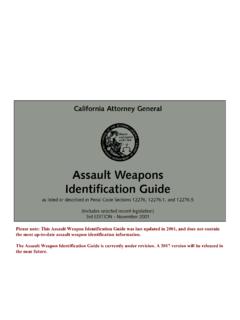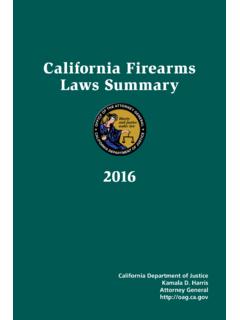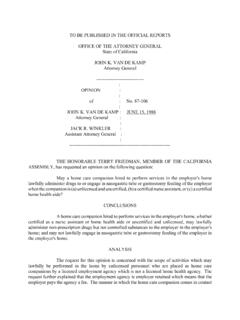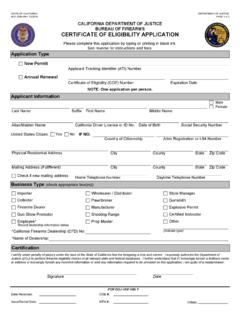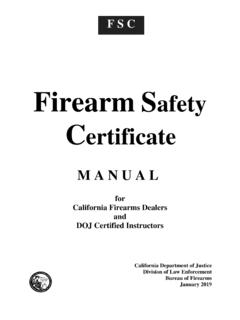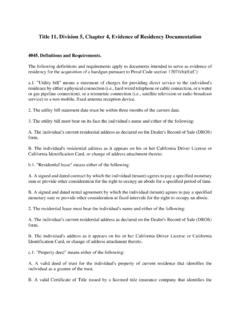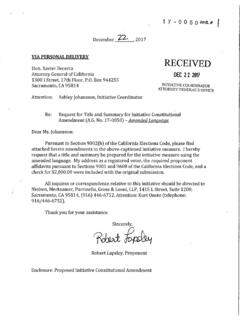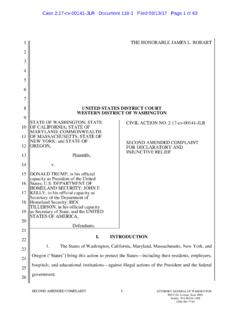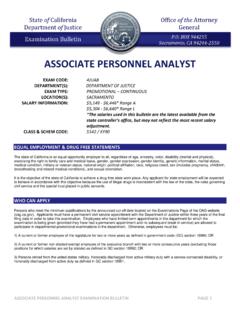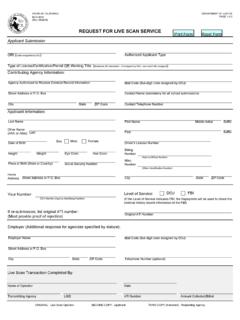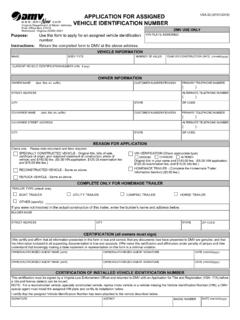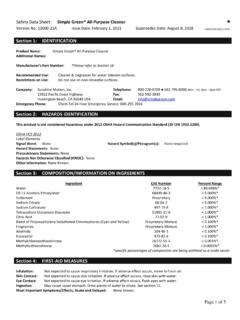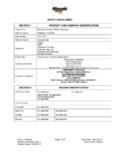Transcription of Assault Weapon Identification Guide - Attorney General of ...
1 California Attorney General Assault weapons Identification Guide as listed or described in Penal Code Sections 12276, , and (Includes selected recent legislation) 3rd EDITION - November 2001 Please note: This Assault Weapon Identification Guide was last updated in 2001, and does not contain the most up-to-date Assault Weapon Identification information. The Assault Weapon Identification Guide is currently under revision. State of California Office of the Attorney General Sacramento, California The purpose of this Guide is to assist peace officers, firearms dealers, and the General public in the Identification of Assault weapons and to promote the better understanding of some of the more significant recently enacted legislation.
2 This booklet may be reproduced without permission for noncommercial purposes, downloaded from the Firearms Division website at , or purchased from the Firearms Division for $2 per copy at the address below. Department of Justice Firearms Division - AW Guide Box 820200 Sacramento, California 94203-0200 Questions or requests for assistance may be directed to: Telephone: (916) 227-3703 Fax: (916) 227-3744 Training for law enforcement agencies and firearms dealers on the subject of Assault weapons or any matter concerning firearms or firearm law enforcement may be scheduled by calling (916) 263-0815.
3 INTRODUCTION For the purposes of this Guide , Assault weapons are divided into three categories. These are: Category 1 - Penal Code section 12276 subdivisions (a), (b), (c) (Roberti Roos Assault weapons Control Act of 1989); Category 2 - Penal Code section 12276 subdivisions (e) and (f) (Kasler v. Lockyer, AK and AR-15 series Assault weapons ); and Category 3 - Penal Code section (SB 23 - generic characteristic Assault weapons ). A combined listing of Category 1 and Category 2 Assault weapons can be found on page 82.
4 Category 1. The Roberti-Roos Assault weapons Control Act of 1989 This was California s first Assault weapons act. Under this act, any firearm on a list specified in Penal Code section 12276 is considered an Assault Weapon . Such Assault weapons are controlled ( , may not be legally purchased, kept for sale, offered for sale, exposed for sale, given, lent, manufactured, distributed, or imported) after December 31, 1991, and were required to be registered as Assault weapons with the Department of Justice on or before March 31, 1992.
5 In addition, the Roberti-Roos Assault weapons Control Act controlled AK and AR-15 series Assault weapons (Penal Code section 12276, subd (e) and (f) - see Category 2). These Assault weapons are controlled regardless of whether they have Category 3 (Penal Code section - SB 23) characteristics. The only legal option for Category 1 Assault weapons that were not registered on or before March 31, 1992, is to surrender them to law enforcement pursuant to Penal Code section 12288. Category 2. AK and AR-15 Series weapons The California Supreme Court upheld the constitutionality of the Roberti-Roos Assault weapons Control Act of 1989 in Kasler v.
6 Lockyer. This decision took effect August 16, 2000. Effective August 16, 2000, firearm models that are variations of the AK or AR-15, with only minor differences from those two models, are Assault weapons under the original Roberti-Roos Assault weapons Control Act of 1989. AK and AR-15 series weap ons were controlled as of August 16, 2000, and must have been registered as Assault weapons with the Depart ment of Justice on or before January 23, 2001. The only legal option for Category 2 Assault weapons that were not registered on or before January 23, 2001, is to surrender them to law enforcement pursuant to Penal Code section 12288.
7 These Assault weapons are controlled regardless of whether they have Category 3 (Penal Code section - SB 23) characteristics. Category 3. Generic Characteristics As of January 1, 2000, Senate Bill 23 (Chapter 129, Statutes of 1999) provided that firearms that have charac teristics falling under any of the categories listed in Penal Code section are Assault weapons . These Assault weapons were controlled as of January 1, 2000, and must have been registered as Assault weapons with the Department of Justice on or before December 31, 2000.
8 However, a person arrested for possession of an unregistered Category 3 Assault Weapon on or before December 31, 2001 could have registered it under condi tions specified in Penal Code section 12280(c) pursuant to reducing the charge to an infraction. On and after January 1, 2002, the only legal option for Category 3 Assault weapons that are not registered is to surrender them to law enforcement pursuant to Penal Code section 12288. An exception for peace officers is addressed on the next page. Punishment Possession Felony or misdemeanor --(Penal Code 12280(b)) Infraction under limited time and conditions --(Penal Code 12280(c)) Manufacture, distribution, transportation, importation, sale, and transfer of Assault weapons -- Felony.
9 (Penal Code 12280(a)) PEACE OFFICER EXEMPTION EFFECTIVE JANUARY 1, 2002 Effective January 1, 2002, a peace officer member of a police department, sheriffs office, or other law enforce ment agency specified in Penal Code section 12280(f) who possesses or receives an Assault Weapon prior to January 1, 2002, may, with the authorization of his or her agency head, retain and personally possess that firearm provided he or she registers it as an Assault Weapon with the Department of Justice on or before April 1, 2002.
10 Any such-identified peace officer may also, with the authorization of his or her agency head, purchase or receive an Assault Weapon on or after January 1, 2002, provided he or she registers it as an Assault Weapon with the Department of Justice within 90 days of receipt. Agency authorization must be in the form of verifiable written certification from the head of the agency identifying the recipient or possesor of the Assault Weapon as a peace officer and authorizing him or her to receive or possess the specific Assault Weapon .
